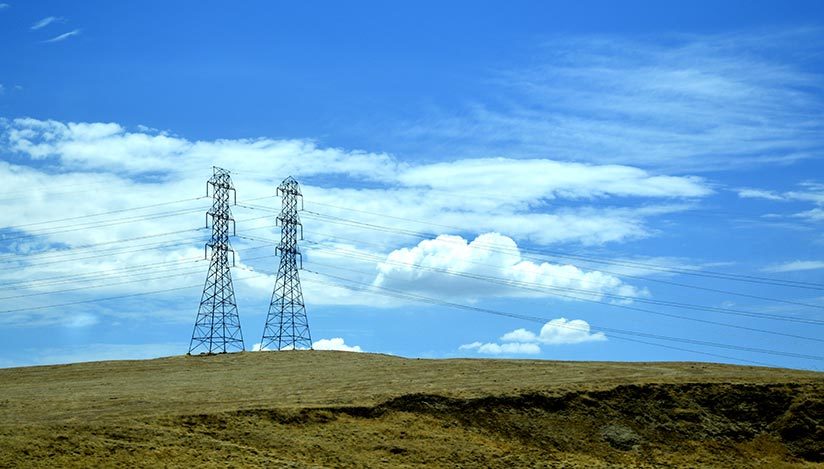Is Joining Pioneer Community Energy an Effective Way to Cut Your PG&E Bill?
PG&E’s electricity rates have been steadily rising year over year, and customers can expect even greater instability in the wake of the company declaring bankruptcy. It’s little surprise that many homeowners have installed solar power systems to lower their energy costs. But some local governments have been taking another route in an attempt to help their citizens keep energy rates down: forming community choice aggregations, or CCAs. CCAs are nonprofit public agencies which represent a given geographic area, such as a county or city, and negotiate energy rates with the utility serving the area.
In 2016, Placer County began exploring the idea of community choice energy programs, and ultimately formed Pioneer Community Energy in February 2018. As a partnership between Placer County and the cities of Auburn, Colfax, Lincoln, Rocklin, and Loomis, Pioneer has thus far managed to offer energy rates lower than those of nearby PG&E customers.
Pioneer is a government agency and doesn’t have to generate profits for shareholders, which is part of why it can offer lower energy rates.
Pioneer acts as an intermediary between Placer County residents and PG&E. As a local government agency, it isn’t privately owned, nor does it pay out profits to shareholders. Any profits generated are reinvested back into the agency, which is not funded by taxes, as well as energy efficiency programs.
Like other CCAs, Pioneer does not own the infrastructure electricity is transmitted through. Pioneer purchases electricity from PG&E for use by Placer County residents. Placer residents still receive bills from PG&E, but instead of being charged the standard rate offered by PG&E, customers are charged a lower rate negotiated by Pioneer.
Pioneer customers with solar power have likely noticed a change in their PG&E billing schedule.
For new solar power system owners, the first true-up bill from PG&E can be a confusing surprise. In an effort to make billing more efficient, PG&E doesn’t bill customers with solar power month to month, but instead issues a bill once per year. If you are currently a net-metered PG&E customer, you should be sure to account for true-up billing in your annual budget.
However, Pioneer customers don’t receive a true-up bill. Placer County homeowners with solar power systems continue to receive monthly bills. Instead of a single large bill at the year’s end, the contributions of their solar systems are reflected with each monthly bill. If customers use more electricity than they generate, then they pay the difference.
This process does not entirely do away with annual billing, as customers are billed once per year for net energy metering transmission and delivery charges.
Pioneer currently maintains lower electricity rates than PG&E, but customers are seeing steady rate increases that reduce their savings.
Pioneer has consistently charged energy rates lower than PG&E’s. As of early 2018, Pioneer charged rates that were, on average, 9% lower than those charged by the utility company.
But less than two years after taking over service in Placer County, the CCA’s promised bargains are already under pressure. In August 2019, the Pioneer Energy Board voted for a plan that would increase rates in order to pay down over $14 million in debts, while bolstering Pioneer’s rate stabilization reserve—money set aside to cover the cost of unexpected price hikes—by nearly $5 million.
Even after the increase, Pioneers rates are 7% lower than PG&E’s. However, these savings fall short of a plan that proposed on July 29th that would have kept rates 17% lower than those charged by PG&E. Ultimately, concerns about Pioneer’s financial stability and credit rating won out over a lower rate for customers. But the spike in rates may have unintended consequences for Pioneer customers moving forward.
The problem lies with the California Public Utilities Commission (CPUC) requirement that CCA customers pay exit fees, also known as ‘power charge indifference adjustments.’ These fees cover the cost of maintaining and operating the infrastructure that PG&E owns and operates. For PG&E customers, the cost of system maintenance is covered through the energy rates they charge. But because PG&E doesn’t control the rate paid by Pioneer customers, these system maintenance fees are instead explicitly itemized in the bills of Pioneer customers.
While the rate charged by Pioneer for electricity may be lower than under PG&E, some customers may still end up paying more under the CCA when exit fees are taken into account. Members of the Pioneer board raised concerns that if rates were not low enough, customers might be lured back to PG&E should the utility cut its own rates. However, the need to ensure Pioneer’s financial stability ultimately won out.
While Pioneer customers may not pay the same rates as direct PG&E customers, they are still impacted by PG&E’s ongoing service problems.
As we have discussed previously, PG&E customers are having to deal with the fallout from the utility company’s controversial approach to reducing the threat of wildfires by shutting down power to regions affected by high winds.
While Pioneer can offer prices lower than PG&E’s, it can’t change the fact that the electricity they bill for is delivered through PG&E’s infrastructure. That’s why, when PG&E shut off power to over 500,000 customers in Northern California in response to fire danger in October of 2019, portions of Placer County woke up to a total blackout.
Pioneer Community Energy customers are going to have to keep in mind, going forward, that issues impacting PG&E customers likely affect them as well.
Pioneer Energy isn’t necessarily direct competition for PG&E, and customers aren’t necessarily breaking free of the utility when they join. Pioneer does offer the opportunity for existing solar customers to potentially save more money, thanks to the reduced energy rates, as well as avoid the need for yearly billing.
But the savings advertised by CCAs are not as guaranteed as they may seem to be, because ultimately, the infrastructure and the overall market rates are still very much under the control of utility companies.
Customers of Pioneer and other CCAs should not rely on their membership in a CCA as their sole means of staving off PG&E rate increases. The rates charged by CCAs will go up as those charged by PG&E other utility companies rise. Going solar is a key means of minimizing your reliance on grid-supplied electricity entirely, and insulating yourself from inevitable future rate increases.
In addition, Placer County homeowners should know that while enrollment in Pioneer Community Energy is automatic, you do have the choice to stay with Pioneer, or opt to return to PG&E. If you ever wish to opt out of Pioneer, you can fill out the site on Pioneer’s website, or call Pioneer at (844) 937-7466. Please note that if you have been with Pioneer for more than 60 days and choose to return to PG&E, you will be required to remain as a PG&E customer for at least one year before you have the option of rejoining Pioneer.

